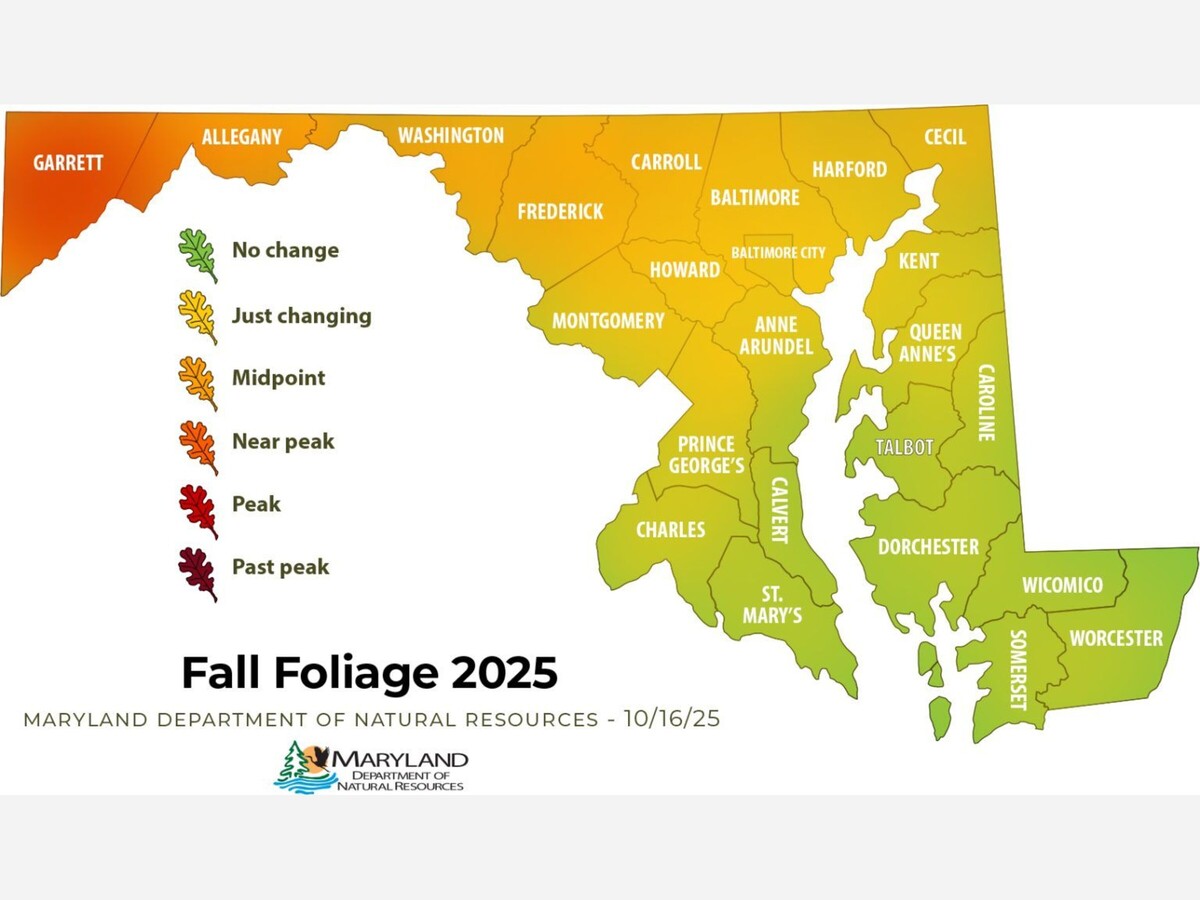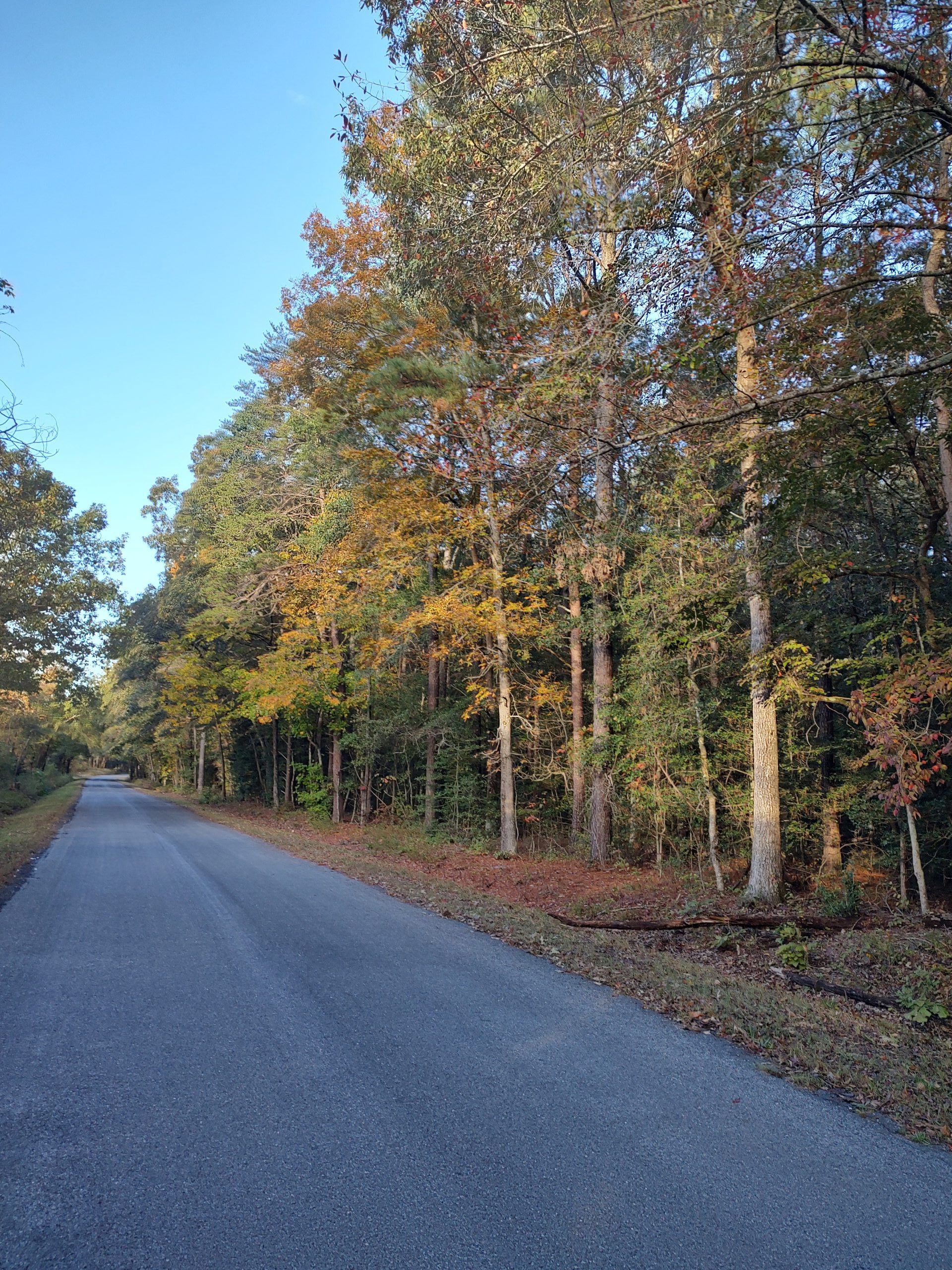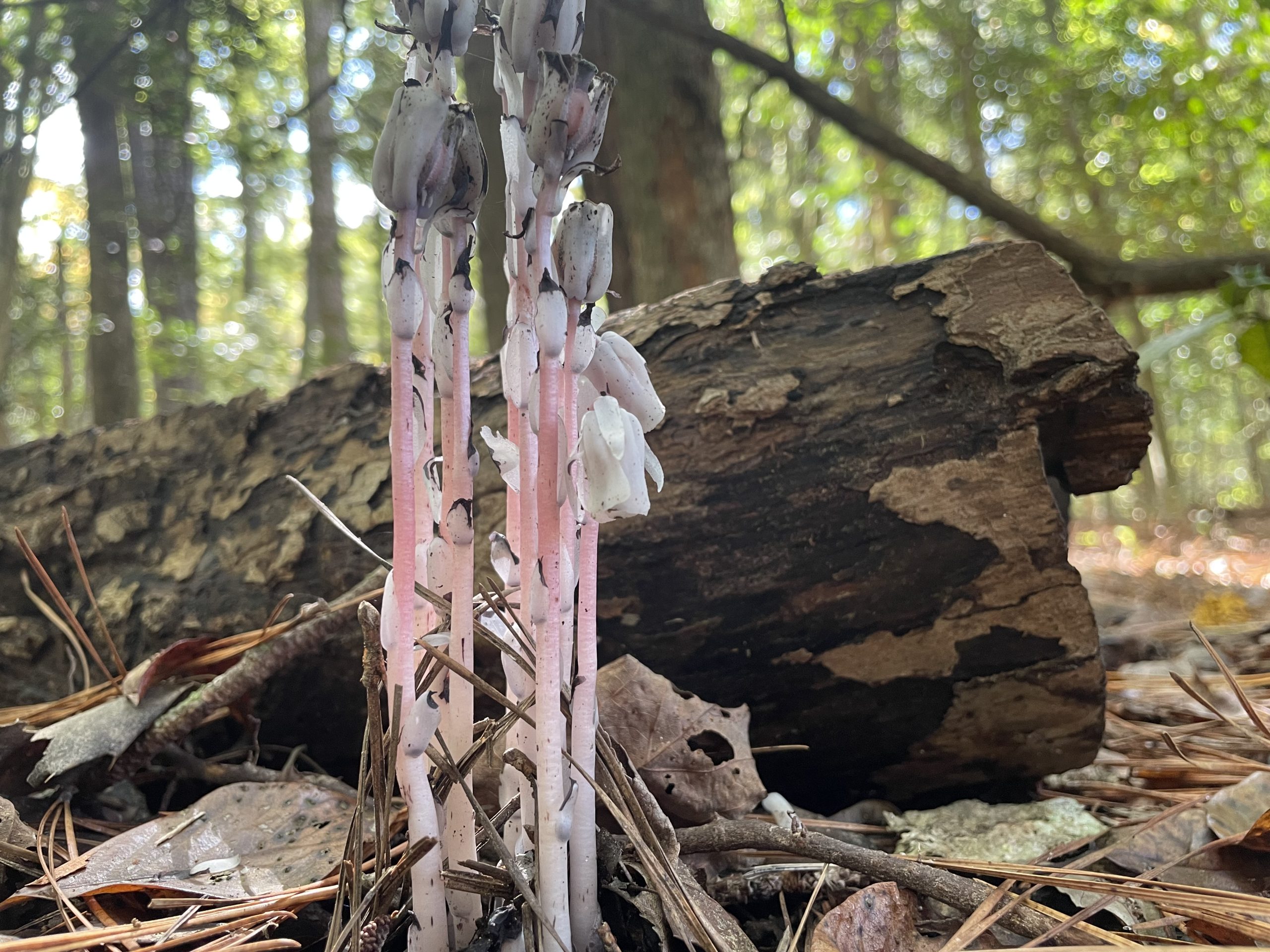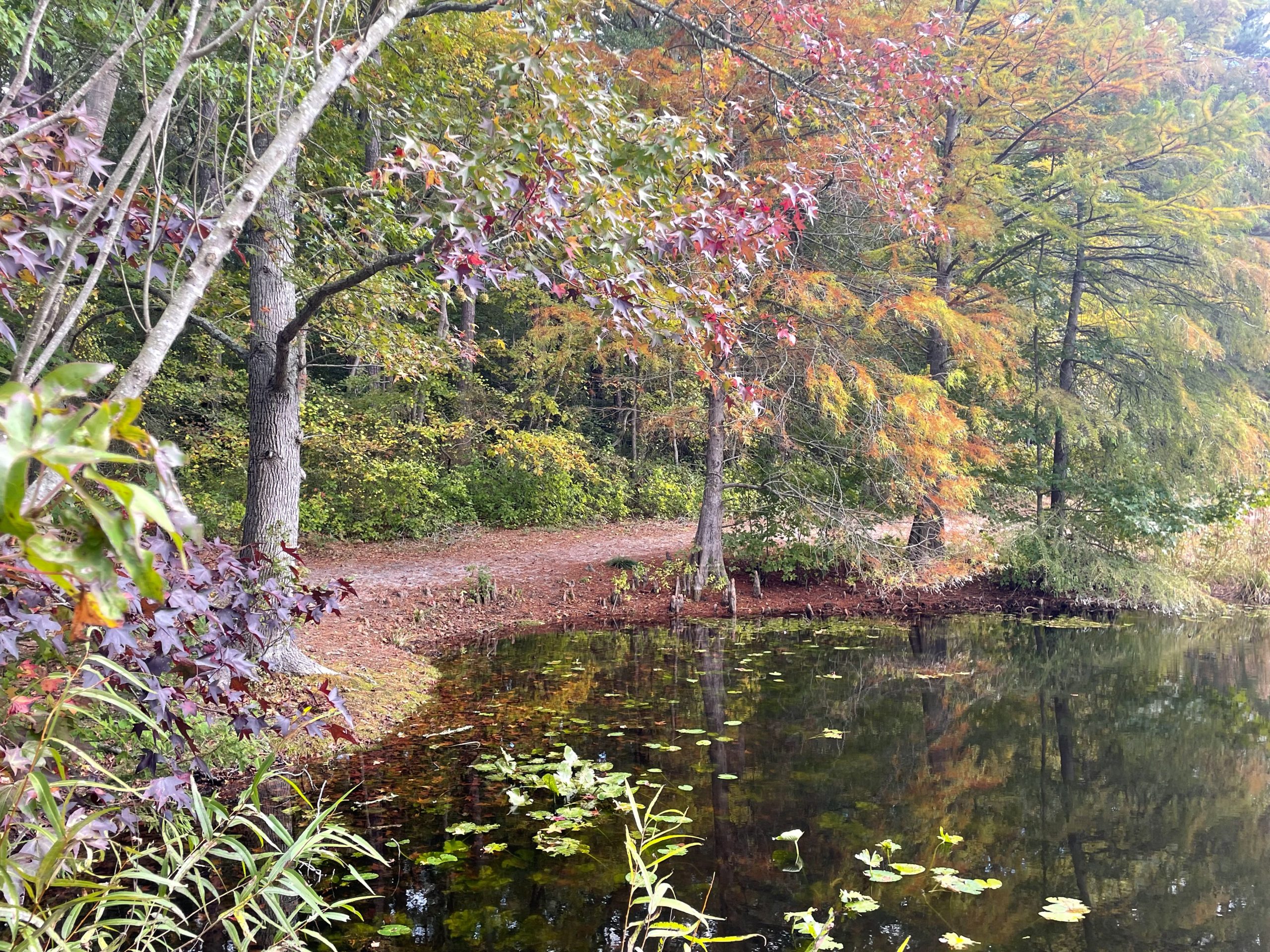Image

As we hit mid-October, our foresters are reporting past-peak conditions at high elevations, while farther east leaves are still only starting to change.
Garrett County is experiencing peak foliage this week, with brilliant yellow leaves on shagbark and pignut hickory trees.
Continued change along the Catoctin Mountain range has slightly progressed over the past week. At this point about a third of trees have or are in the process of changing. More rain has continued to bring down leaves, but previous drought stress has limited overall color. Most species have revealed some color change.
Western Montgomery County and Carrol County are nearing midpoint, with walnut, spicebush, blackgum, and redbud showing beautiful colors. Baltimore, Howard, Harford and Cecil counties are showing more color but still just changing, though frost and rain has contributed to some leaf fall.
On the Eastern Shore, cooler, shorter days are finally causing the leaves to change.
Garrett County, Forester Melissa Nash

Yellow hickory leaves. Photo by Melissa Nash.
Some much-needed moisture has helped stay additional leaf drop in Garrett County, and allowed for additional color. Higher elevations, however, are pushing past peak from leaf drop earlier in the season. Much of the county began seeing peak foliage early this week with lower elevations, and some later changing species, such as oaks, still to come.
My personal favorite, and star of the show this week, are the hickories! Shagbark hickory and pignut hickory are the most common of the Carya genus in Garrett County. These species typically turn a glowing golden yellow. While not quite as vibrant as other years, they are starting to shine.
Frederick County, Dakota Durcho

Continued change has been noted over the past week along the Catoctin Mountain range. Despite more rain, the dry conditions early in the season have cemented early leaf drop and limited color. Leaf change and drop can be seen on about a third of trees now. The most commonly changed trees are black walnut, blackgum, flowering dogwood, red maple, yellow-poplar, and some hickory and oak.
The oaks had the most notable change since last week. So far, the oaks appear to be browning and dropping leaves with little to no color change. Once freezing temperatures arrive, leaf change and drop will speed up.
Dorchester County, Forester Alex Fignar

Cooler temperatures and shorter days are finally impacting foliage in the mid-Shore region.
The Marshy Hope Complex in Northern Dorchester County provides a glimpse into the foliage change beginning to occur.
While the oaks are still sturdy and green, the sweet gum, hickories, and dogwoods have begun to exhibit their fall colors. Sweet gum and hickory are turning a bright yellow to orange while dogwoods and black gum are beginning to turn bright red bringing sharp contrast to a once green landscape.
Somerset County, Forester Rachel Egolf
We have signs of changing leaves in Somerset County on the southern part of the Eastern Shore. Yellows, browns and a few reds and purples can be seen if one is looking.
Field edges and forest buffers are easier to see now that the corn is being harvested throughout the county.
Walnut trees (Juglans nigra) are yellowing and dropping leaves while their large green fruits hang in the trees. American sycamores (Platanus occidentalis) are turning from yellow to brown. Dogwoods (Cornus florida) are showing their red and purplish leaves dominated by anthocyanins along with clusters of bright red or orange drupes.
Speaking of those beautiful reds and purples, poison ivy is showing off by changing from glossy green to its fall colors now. Remember: leaves of three, let it be. Virginia creeper vines (Parthenocissus quinquefolia), with their five leaflets, are turning red with purplish black berries. These berries are poisonous to humans.
Persimmons (Diospyros virginiana) are ripening and falling in the forest. Cutting open the seeds you can find the shapes of either spoons, knives or forks in the center of the kernel. Old wisdom claims the shape found in the seed predicts whether the coming winter will be snowy with plenty of snow to shovel (spoon), bitterly cold with biting winds (knife), or mild (fork).
Deer and other animals that depend on the tasty fruit don’t care what shape is in the center as they usually eat the fruit whole.
Worcester County, Pocomoke River State Park Camp Store Manager Janet Heaton

Ghost flower. Photo by Anthony Jenkins.
The nor’easter made its way through the Eastern Shore this past weekend but the sunshine has returned. Cooler weather is making it feel more like fall and nature is changing the landscape colors like a beautiful painting.
Ghost flower, or ghost pipe, was spotted in the Shad Landing area of Pocomoke River State Park. Ghost flower does not produce chlorophyll, causing its whitish-pink appearance. Read more about this unique plant on our website.
There are also mushrooms underfoot this time of year along with the knees of bald cypress trees.

Pocomoke River State Park, Shading Landing. Photo by Anthony Jenkins.

Honey mushrooms at Shading Landing. Photo by Anthony Jenkins.